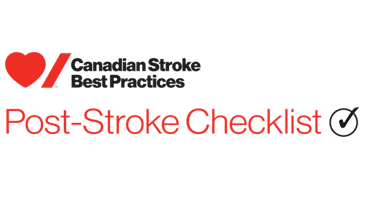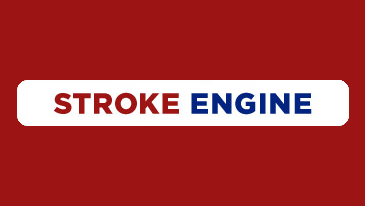- Definition and Considerations
- 1. Supporting People with Stroke, Their Families and Caregivers
- 2. Education for People with Stroke, Their Families and Caregivers
- 3. Interprofessional Care Planning and Communication
- 4. Community Participation Following Stroke
- 5. Transition to Long-Term Care Following a Stroke
- 6. Post Stroke Depression
- 7. Post-Stroke Fatigue
Successful transitions and community participation following stroke requires integrated and coordinated person-centred efforts by all members of care teams involved with people who have had a stroke, their families and caregivers, and the broader community. The primary underpinnings of Partnerships and Collaborations in stroke transitions of care are to provide person and family-centered care across all transition points, and to ensure effective and efficient transfers of care and information to the next stage and setting of care. Careful monitoring and efforts to meet the needs of people throughout recovery from stroke are essential components to delivering a coordinated and seamless system of care that supports progress achieved during the initial recovery stages and enables people to successfully resume life roles and leisure activities.
In Canada, one-third of people with stroke, usually with TIA and milder strokes, are discharged back to the community directly from the emergency department. Of those individuals admitted to acute inpatient care, 42% will be discharged to their homes independently, and an additional 17% will be discharged home with arrangements for home care services, 16% will be transferred to an inpatient rehabilitation service, 10% will be transferred to long-term care or complex continuing care, and 13% will be transferred to another acute care facility (usually back to community hospital from a tertiary hospital) (HSFC Stroke Technical Report 2019). Ultimately most people who survive a stroke will return to the community, to live independently or with varying degrees of support. Their physical, emotional, psychological, social and environmental needs are considered throughout this set of CSBP recommendations.
All members of the healthcare team engaged with people with stroke and their families are responsible for partnerships and collaborations to ensure successful transitions and return to the community following stroke. This responsibility also extends to caregivers. Caregivers are essential members of the circle of care, providing many forms of support and direct care following discharge from hospital. The needs of a caregiver with serious health issues, a relatively typical situation among older spouses, may be quite different and require more intensive intervention in order to ensure appropriate and timely support for the person recovering from stroke.
Key components of successful transitions and community participation include:
- Collaborative goal setting between the healthcare team, people with stroke and their families, where there is active participation in discussions, planning, and shared decision-making
- Ongoing education for people with stroke, their families and caregivers that reinforces key information and verifies understanding, regardless of setting; education should take place in the emergency department, primary care, acute inpatient care (regardless of location within the hospital), rehabilitation services, outpatient and community settings
- Skills training appropriate to individual needs and goals – for both people with stroke and their families and informal caregivers - to facilitate safe transitions
- Discharge planning that begins soon after stroke admission and includes the coordination of all relevant support services, such as home assessments and access to ambulatory and community-based rehabilitation
- Transition planning that includes the provision of a comprehensive resource list and ensuring that people with stroke, their families and caregivers are aware of stroke and community services
- Ongoing assessment of family and caregiver capacities to provide care for the person with stroke, their individual support needs and potential burden of care
- Timely transfer of medical and recovery information between stages and settings of care
- Appropriate medical support by primary care physicians and community team members, as well as stroke team members and stroke prevention services
- Access to full scope of rehabilitation services within the community
- Stroke navigators or case managers in place to facilitate transitions of care and ensure continuity of care across settings, as well as appropriate access to needed resources and services
- Identification of and linkages to community resources, long-term care and home-based care
- Accessible transportation and options for driver’s licensing
- Ongoing surveillance of physical, psychological, social and emotional recovery, coping and adaptation following discharge from inpatient acute care and rehabilitation settings.
A coordinated and seamless system taking all these components into account will minimize challenges and complications when transitioning between stages and settings for stroke care, and lead to better recovery outcomes, and increased participation in daily activities, self-management and the resumption of life and social roles. Stroke case managers and/or stroke system navigators are valuable additions to the stroke care team, and where resources permit, should be made available to the person with stroke, their family and caregivers. Stroke navigators empower people to be involved in their own care, build self-management skills and confidence, and aid in access to community resources, support groups and linkages. Providing supports such as navigators may reduce the burden to the health system and to health care professionals providing reactive care.
Partnerships and Collaborations in the area of stroke care transitions is also directed to researchers and research funding organizations. The body of evidence for many of the topics addressed in this module is based on observational studies, small qualitative research initiatives, observational studies and cohort studies. Randomized controlled trials and systematic reviews are lacking in this area of stroke management. Despite the lower levels of evidence, the topics covered in this module have high importance for people who experience a stroke, their families and caregivers, and are therefore presented based on moderate evidence and expert opinion. Where evidence is not available, clinical considerations have been included to draw attention to important aspects of care and provide guidance based on the expert opinion of leading care providers and researchers in this field.
The 2019 update of the CSBPR Transitions, Participation and Reintegration following Stroke module reinforces the growing and changing body of research evidence available to guide ongoing screening, assessment and management of persons with stroke, their families, and caregivers to ensure they move from one phase and stage of care to the next without ‘falling through the cracks’ or ‘getting lost out of the system’.
The Canadian Stroke Best Practice Recommendations (CSBPR) Transitions and Community Participation following Stroke 2019 Sixth Edition module supersedes all recommendations contained in the CSBPR Managing Stroke Transitions of Care 2015 Fifth Edition module.
Highlights of the moderate and significant updates as well as new additions to Transitions and Community Participation Following Stroke module recommendations for 2019 include:
- Addition and revision of comprehensive recommendations for community participation and resuming life roles following stroke.This section addresses the rehabilitation and community participation aspects of issues including return to driving, vocational roles, leisure activities and relationships and sexuality.
- New clinical considerations have been added to each section, acknowledging emerging therapies and consensus-based practices.
- Emphasis on the need to include social rehabilitation as an important component of assessments and interventions
- Inclusion of recommendations that discuss the involvement of Telestroke in transitions of outpatient and community-based care.
The detailed methodology and explanations for each of these steps in the development and dissemination of the CSBPR is available in the Canadian Stroke Best Practice Recommendations Overview and Methodology manual available on the Canadian stroke best practices website.
Note about Assignment of Levels of Evidence in the Transitions and Community Participation Module:
The authors recognize that for many of the topics and associated recommendations for transitions of care, reintegration and community participation, there is a paucity of Level A evidence. Randomized controlled trials are difficult to conduct in this area of care, and the evidence for most of the following recommendations is based on qualitative and observational studies and expert opinion. The language used in these recommendations may appear less congruent with the assigned levels of evidence. This has been done purposefully as people with stroke, families and caregivers have expressed, both through formal and informal assessment, that transitions in care represent some of the greatest challenges faced after stroke. Although the evidence is ongoing, the needs are real and our goal is to raise awareness and attention to these areas. The CSBPR are responsive to this need; the inclusion of these recommendations is intended to facilitate a holistic approach to person and family-centred care to promote optimal outcomes, as well to highlight the importance of further research into this important aspect of stroke care.
Anita Mountain (First Author), Naresh Bain, Rebecca Bowes, Donna Cheung, Helene Corriveau, Lynn Joseph, Dana Lesko, Ann Millar, Beena Parappilly, Aleksandra Pikula, David Scarfone, Annie Rochette, Trudy Taylor, Tina Vallentin, and Jill I. Cameron (Senior Author), on behalf of the Transitions and Community Participation following Stroke Best Practice Writing Group, and the Canadian Stroke Best Practices and Quality Advisory Committee; in collaboration with the Canadian Stroke Consortium and the Canadian Partnership for Stroke Recovery. Transitions and Community Participation Following Stroke Module 2019. In M. Patrice Lindsay, Anita Mountain, Gord Gubitz, Dariush Dowlatshahi, Leanne K Casaubon, Andrea de Jong and Eric E Smith (Editors), on behalf of the Canadian Stroke Best Practices and Quality Advisory Committee in collaboration with the Canadian Stroke Consortium and the Canadian Partnership for Stroke Recovery. Canadian Stroke Best Practice Recommendations Sixth Edition, 2019; Toronto, Ontario Canada: Heart and Stroke Foundation.
We invite comments, suggestions, and inquiries on the development and application of the Canadian Stroke Best Practice Recommendations.
Please forward comments to the Heart and Stroke Foundation’s Stroke Team at strokebestpractices@heartandstroke.ca
Taking Action for Optimal Community and Long-Term Stroke Care (TACLS) is an evidence-based resource closely linked with the HSF Canadian Stroke Best Practice Recommendations. It provides information and guidance to help support healthcare providers as they work together with people who have had a stroke living in community and long-term care settings. Click here for more information.
- Transitions and Community Participation Following Stroke guideline publication in the International Journal of Stroke
- Writing Group Members and External Reviewers
- Definitions and Descriptions





